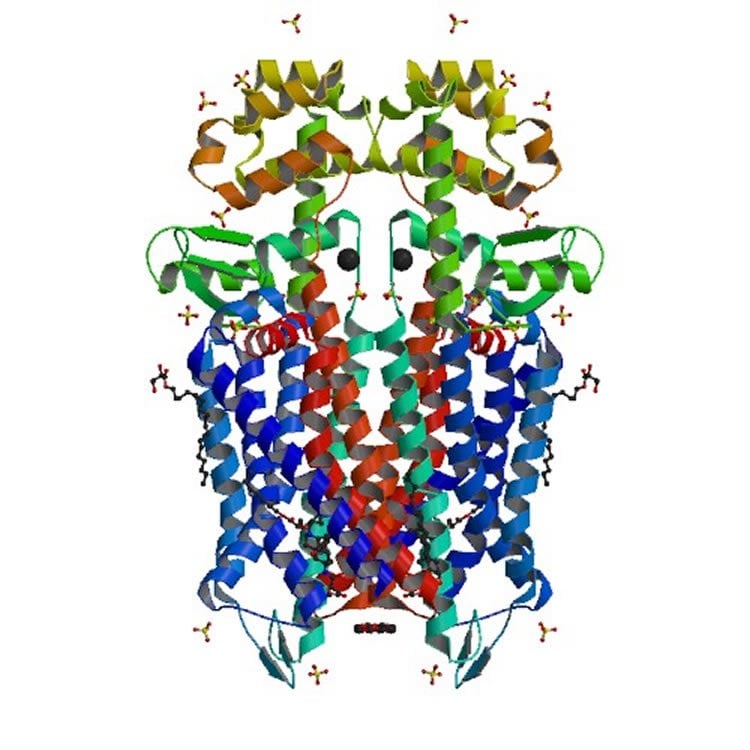Once used in the 18th century as currency to reverse the trade imbalance between China and Britain, morphine and its pain-killing qualities have been misunderstood (and misused) almost continually ever since.
The drug works its euphoric effect by acting on a specific protein that has been part of vertebrate anatomy for nearly a half-billion years. Despite that lengthy pedigree, regulation of these receptor proteins has never been well understood.
A new study led by Kirill Martemyanov, an associate professor on the Florida campus of The Scripps Research Institute (TSRI), has shown that a specific molecule controls morphine receptor signaling in a small group of brain cells. The findings could lead to a new drug target for developing less-addictive pain medications and even offer a clue to the genetic predisposition of patients to addiction before treatment.
The study was published recently online ahead of print by the journal Biological Psychiatry.
The molecule in question is known as a regulator of G protein signaling (RGS) protein, which controls the morphine receptor (mu opioid receptor). Using genetically modified animal models lacking a particular RGS protein called RGS7, a protein abundant in the brain, the study showed that eliminating the protein enhanced reward, increased pain relief, delayed tolerance and heightened withdrawal in response to self-administered morphine doses. In other words, without the protein, the animals were predisposed to morphine addiction.
“The mu opioid receptor acts as a conductor of the drug’s effects, while RGS7 acts as a brake on the signal,” Martemyanov said. “The animals could press a lever to receive an infusion of morphine. We looked at the number of lever presses to determine how much they liked it and, judging from this test, mice lacking RGS7 craved the drug much more than their normal siblings.”
RGS7 appears to exert its effects by regulating morphine-induced changes in excitability of neurons and plasticity of synapses–the ability of the synapse, the junction between two nerve cells, to change its function.
“This study reveals a unique modulatory role of RGS7 in a brain-region-specific action to morphine use and indicates RGS7 as a potential drug target,” said Research Associate Laurie P. Sutton, the first author of the study. “Pharmacological intervention at the level of RGS7 may reduce some of the detrimental side-effects associated with opiates.”

Martemyanov believes there is a strong diagnostic future for their discovery.
“If our findings hold true for human patients, you could look specifically for RGS7 levels for any disabling mutation with a simple blood test,” he said. “Mutations could indicate a strong reaction to a drug such as morphine–people carrying a deficient copy of the RGS7 gene might need much lower doses of opioids and could be cautioned to be extra careful with these substances.”
This might also shed light on why some people have such a difficult time with addiction to drugs such as morphine, while others are not so susceptible, Martemyanov noted.
Surprisingly, in addition to drug craving, the animals lacking RGS7 also worked harder to obtain a food reward, further suggesting that RGS7 may be a more general regulator of reward behavior extending beyond drug-induced euphoria.
Funding: This work was supported by the National Institutes of Health (grants DA026405, DA036082 and DA036596) and the Canadian Institutes of Health.
Source: Eric Sauter – Scripps Research Institute
Image Source: The image is credited to Protein Data Bank and is licensed CC BY-SA 3.0
Original Research: Abstract for “Regulator of G-Protein Signaling 7 Regulates Reward Behavior by Controlling Opioid Signaling in the Striatum” by Laurie P. Sutton, Olga Ostrovskaya, Maria Dao, Keqiang Xie, Cesare Orlandi, Roy Smith, Sunmee Wee, and Kirill A. Martemyanov in Biological Psychiatry. Published online August 14 2015 doi:10.1016/j.biopsych.2015.07.026
Abstract
Regulator of G-Protein Signaling 7 Regulates Reward Behavior by Controlling Opioid Signaling in the Striatum
Background
Morphine mediates its euphoric and analgesic effects by acting on the μ-opioid receptor (MOR). MOR belongs to the family of G-protein coupled receptors whose signaling efficiency is controlled by the regulator of G-protein signaling (RGS) proteins. Our understanding of the molecular diversity of RGS proteins that control MOR signaling, their circuit specific actions, and underlying cellular mechanisms is very limited.
Methods
We used genetic approaches to ablate regulator of G-protein signaling 7 (RGS7) both globally and in specific neuronal populations. We used conditioned place preference and self-administration paradigms to examine reward-related behavior and a battery of tests to assess analgesia, tolerance, and physical dependence to morphine. Electrophysiology approaches were applied to investigate the impact of RGS7 on morphine-induced alterations in neuronal excitability and plasticity of glutamatergic synapses. At least three animals were used for each assessment.
Results
Elimination of RGS7 enhanced reward, increased analgesia, delayed tolerance, and heightened withdrawal in response to morphine administration. RGS7 in striatal neurons was selectively responsible for determining the sensitivity of rewarding and reinforcing behaviors to morphine without affecting analgesia, tolerance, and withdrawal. In contrast, deletion of RGS7 in dopaminergic neurons did not influence morphine reward. RGS7 exerted its effects by controlling morphine-induced changes in excitability of medium spiny neurons in nucleus accumbens and gating the compositional plasticity of α-amino-3-hydroxy-5-methyl-4-isoxazole propionic acid and N-methyl-D-aspartate receptors.
Conclusions
This study identifies RGS7 as a novel regulator of MOR signaling by dissecting its circuit specific actions and pinpointing its role in regulating morphine reward by controlling the activity of nucleus accumbens neurons.
“Regulator of G-Protein Signaling 7 Regulates Reward Behavior by Controlling Opioid Signaling in the Striatum” by Laurie P. Sutton, Olga Ostrovskaya, Maria Dao, Keqiang Xie, Cesare Orlandi, Roy Smith, Sunmee Wee, and Kirill A. Martemyanov in Biological Psychiatry. Published online August 14 2015 doi:10.1016/j.biopsych.2015.07.026






